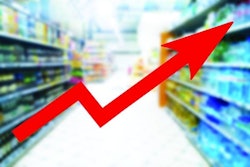
North American pet food sales will increase at a compound annual rate of 3.4% through 2026, according to Euromonitor International projections. As we know from many reports, this growth — and that over the last few years — has come largely from inflation, aka retail price increases. For example, NielsenIQ data shows pet food prices in the U.S. rose 21.8% in 2022.
Thus, pet food sales have been rising, to the tune of reaching US$49 billion for the 52 weeks ending April 29, 2023, according to NielsenIQ. While that’s across all channels, including the booming online space, that figure — and the accompanying growth rate of 17% — are higher than any I’ve seen and perhaps rather implausible.
Regardless, the U.S. pet food market has been growing, and the latest NielsenIQ report says it’s not solely due to inflation. “This growth is being driven by a number of factors that affect demand, including the increasing popularity of pets, the growing awareness of the importance of pet nutrition and the rising demand for premium and specialized pet foods,” it says. “Pet food continues trending at a four-year high and is following similar year-over-year trends.”
Growth from the pet food manufacturing perspective
The NielsenIQ pet food report attributes the continued growth in the U.S. market to the dominance of online shopping, innovation in products and growth in formats like freeze-dried. The foundational factor to all is pet owner demand, which pet food companies have responded to admirably and successfully.
To wit, let’s look at the market from the pet food manufacturing perspective. Another new report, “Economic Contributions of the Animal Feed and Pet Food Industries, April 2023,” from the American Feed Industry Association (AFIA), highlights growth from 2017 to 2022 by comparing the latest data — collected and analyzed by Decision Innovation Solutions, an economics research and analysis firm — to a similar study commissioned in 2016 by AFIA’s Institute for Feed Education and Research (IFEEDER).
That comparison shows pet food and animal feed together accounted for 80,344 direct jobs in the U.S. in 2023, 19,567 more than in 2017. Labor income was up US$2.3 billion, from US$4.6 billion in 2017 to US$6.9 billion in 2022. The value added to the U.S. economy by both industries totaled US$18.8 billion in 2023, US$4.9 billion more than in 2017. The only decline was in sales (output), down US$2.9 billion for a total of US$85.2 billion in 2023. (It’s difficult to tell from the report whether that decrease is attributable to both animal feed and pet food; given other pet food sales numbers, it’s hard to imagine a decline in pet food.)
Looking at pet food manufacturing specifically, it directly accounted for US$10.8 billion in added value for the U.S. economy, including US$2.9 billion in labor income representing 32,938 jobs, and US$34.5 billion in output (sales — quite a bit lower than that NielsenIQ report though also likely not tracking the exact same metrics).
The new AFIA study also incorporates indirect contributions to the U.S. economy, including sales to and purchases from other industries. “In addition to purchasing needed inputs, the feed and pet food manufacturing industries also generate economic activity by utilizing related services and industries such as truck and rail transportation services, financial institutions, advertising and more,” explains Leah Wilkinson, AFIA’s vice president of public policy and education, in a blog post.
That expansion shows total pet food contributions of US$40 billion in added value, including US$8.6 billion in labor income; 283,736 jobs; and US$102.3 billion in output (sales). Also of note, pet food manufacturing accounts for a total of US$7.4 billion in federal, state and local taxes, with US$1.6 billion of those being directly attributable.
Sharing state-level pet food data
The AFIA report shares data at the state level, too, including for ingredient processing usage. In terms of affecting the U.S. economy, “Five states consistently rank at the top of all reported measures of the economic contribution of their pet food manufacturing industries: Missouri, Kansas, Pennsylvania, California and Iowa,” the report says. This is largely because these states have multiple pet food manufacturing facilities, from 18 in Iowa to 59 in Pennsylvania—the highest number in the country by far, despite losing 13 facilities since 2017. The next highest number of pet food plants is in Michigan, at 33, while many states have 20-29 plants.
In total, the U.S. has 523 pet food manufacturing plants, up from 514 in 2017. The biggest gainer was Utah, which added nine facilities.
The report contains a wealth of data helping to tell the U.S. pet food industry’s growth story. I encourage you to download it and spread this good news far and wide.


















